Inhaltsverzeichnis
Principles for ETL SAP Outbound Calls
Data will be sent out to its destination by the report /EPO1/ETL_SEND or /EPO1/ETL_SEND_REALTIME. The collection, formatting and sending of data must be programmed in a subclass of /EPO1/CL_ETL_SEND, method UE_COLLECT_AND_SEND_DATA.
See also EPO Connector ETL: The Concept
and see EPO Connector ETL: Initial Customizing
Precondition for ETL SAP Outbound Calls
- EPO Connector must be installed
- Workbench Transport for EPO Connector ETL packages must be imported
- Optional: Workbench Transport for solutions like Microsoft Dynamics 365 CRM must be imported
- EPO Connector Customizing must be set-up
- ETL Customizing must be set-up
- Connection to destination must be set-up
/EPO1/CL_ETL_SEND Sub-Class-Method Implementation
The method /epo1/cl_etl_send does not contain active ABAP code. Thus the method must be re-defined in another class. The method contains sample coding, which is commented out.
A sample implementation is class/method /EPO1/CL_MSCRM_ETL_SEND->UE_COLLECT_AND_SEND_DATA.
EPO Connector Customizing for ETL SAP Outbound Calls
The EPO Connector can be called with SAP transaction /epo1/exc (add it to your favorites)
- Set up an EPO Connector Service
- Set up the Outbound Service configuration
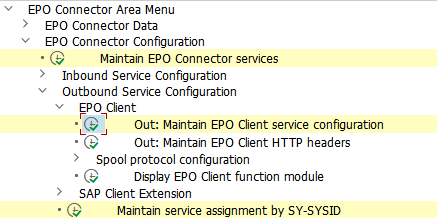
Set up an EPO Connector Service
Transaction /EPO1/SERVICES12
For example create an EPO Connector Service with name "sap2mscrm"
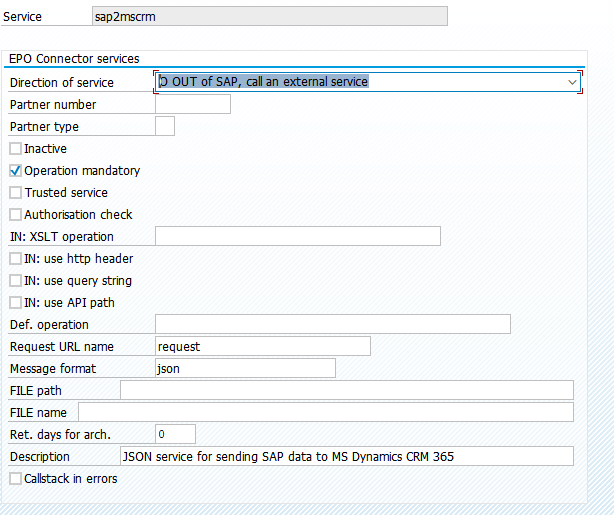
Set up the Outbound Service configuration
Transaction /EPO1/EPORTIN12
and Transaction /EPO1/GFMCOP12
Transaction /EPO1/EPORTIN12
- Create 1 entry for the OAuth2.0 Token request
- Create an entry for each API call

Configuration example for token request
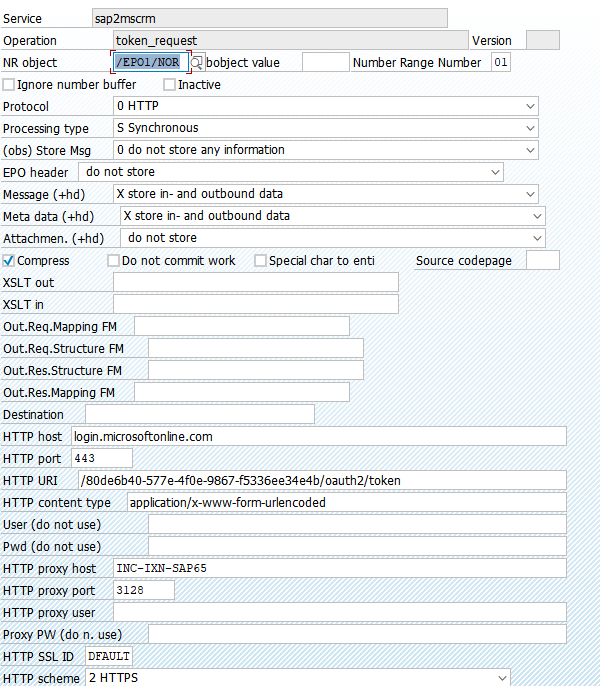
Configuration example for API call
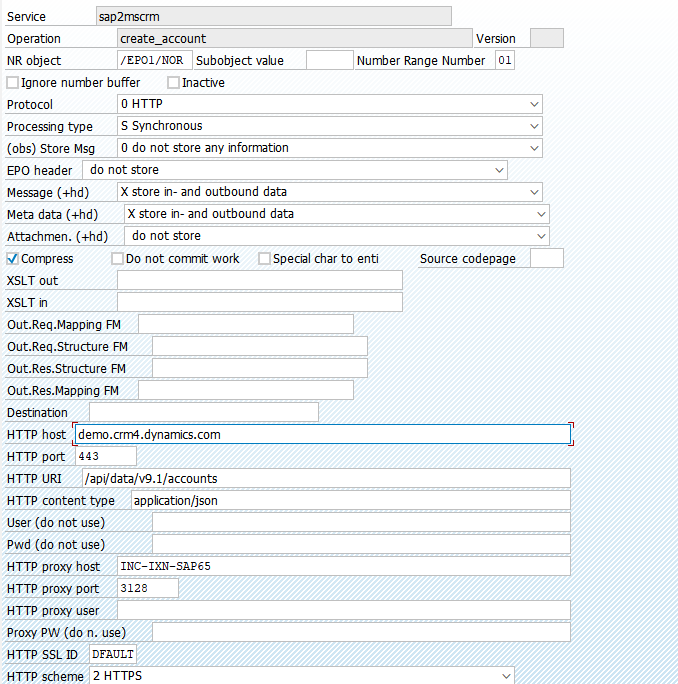
Enter the login credentials
Transaction /EPO1/EC_EB_WSSP12 (Report /EPO1/EC_EB_SERVICE_PARAMETERS)
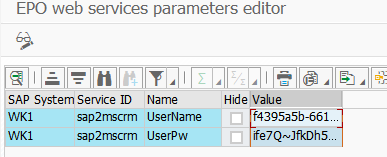
ETL Customizing
ETL Customizing is done with transaction SM30 for the following 3 customizing tables (table /EPO1/ETLOBJ_IN and /EPO1/ETLOBJ_FLD are not relevant):
| Table | Description | Detail |
|---|---|---|
| /EPO1/ETLOBJ | Definition of an ETL object | |
| /EPO1/ETLOBJ_OUT | ETL Outbound: Class and Realtime definition for ETL objects | Only relevant for ETL Outbound scenarios |
| /EPO1/ETLOBJ_SID | Object settings by SAP System ID | No deletion of an object entry after reading/sending |
| ETL Inbound: Function and structure for ETL objects | Only relevant for ETL Inbound scenarios | |
| Define key fields and always filled fields | Relevant only for API getDefinition |
ETL Object Definition in Table /EPO1/ETLOBJ
Definition of ETL objects
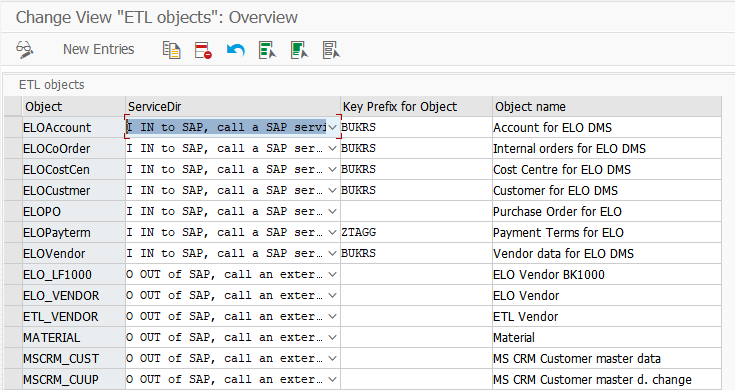
ETL Outbound Funktion in Table /EPO1/ETLOBJ_OUT
Definition of the processing class. The class must be a re-definition of class /epo1/cl_etl_send.
The flag "Real-time" allows sending data in real time.
Note: With the EPO ETL solution there are 2 other options for filling table /EPO1/ETL. First there is a report provided and second there is the method /EPO1/CL_ETL_LOG->ADD_KEY, which can be used in SAP User-Exits for real-time updates.

ETL Settings per SAP System ID in Table /EPO1/ETLOBJ_SID
By default object entries will be cleared out of table /EPO1/ETLLOG when API getData reads it.

Set-up Data Sending
Data is sent with report /EPO1/ETL_SEND. The report can be scheduled as SAP job.
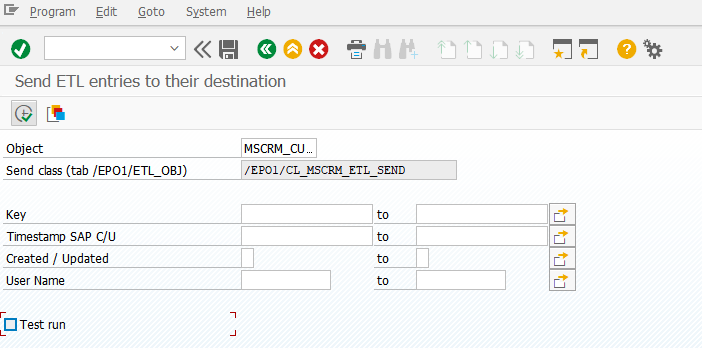
The report reads entries from table /EPO1/ETLLOG for the selected object. After successful sending the entries will be deleted, if not otherwise configured in table /epo1/etlobj_sid.
The technical protocol can be found in the EPO Connector message logging.
Set-up of Real-Time Data Transfer
Data is sent in real-time with report /EPO1/ETL_SEND_REALTIME.